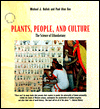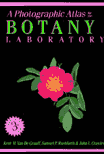College of Micronesia-FSM
Division of Natural Science and Mathematics
SC/SS 115 Ethnobotany Outline
| Course Title |
Number |
Division |
| Ethnobotany |
SC/SS 115 |
Natural Science and Mathematics/Social Sciences |
Course Description
Course combines the study of the interaction of people and plants with a broad survey
of the diversity of plants described both scientifically and culturally. Students learn
about the social impact of plants on culture while becoming knowledgeable in the
characteristics, local uses, and names of the major plant phyla present in Micronesia.
Computer based technologies are also a component of this course.
| Course Prepared by: |
Dana E. Lee Ling |
State: |
National Campus, Pohnpei |
Structure
|
Hours Per Week |
|
No. of weeks |
|
Total Hours |
|
Semester Credits |
| Lecture/Discussion |
3 |
x |
16 |
= |
48 |
|
3 |
| Laboratory |
|
|
|
|
|
|
|
| Workshop |
|
|
|
|
|
|
|
|
|
|
|
|
Total Semester Credits |
|
3 |
Purpose of Course
| Degree requirement |
|
| Degree elective |
X [Science or Social Science] |
| Certificate |
|
| Other |
|
Prerequisite Course
ESL 089 Reading V
Signatures
Chairperson, Curriculum Committee: ________________________ Date: _______________
President, COM-FSM: __________________ Date: _________________
- Course Objectives
- General Objectives
- Study the interactions of people and plants.
- Learn the functions, roles, and uses of plants in Micronesian culture.
- Learn scientific systems of plant classification.
- Explore Micronesian systems for organizing plants.
- Study the diversity of plants.
- Learn plant names, both scientific and local Micronesian name.
- Learn the structures, life cycles, and unique characteristics of the phyla present in
Micronesia
- Develop knowledge of the life cycle, reproduction, and general structure of plants.
- Acquire an understanding of the importance of plants in our daily lives.
- Identify local ethnobotanically useful species
- Specific Objectives: 70% mastery. Students will be able to...
- List cultural uses of plants globally
- List cultural uses of plants locally
- Distinguish between public and private knowledge plant medicine
- Describe healing and medicinal uses of plants
- Cite an example where the export of live plants or seeds caused the loss of an
economically important expert industry in a country.
- Describe the issues concerning ownership of indigenous knowledge.
- Describe the process of ethno-directed pharmacological research.
- Distinguish between cultural diseases unique to a single culture and globally
distributed diseases.
- Capture botanical images and drawings using digital cameras, scanners, and digital
microscopes.
- Produce online ethnobotanical herbarium pages in HTML including images, identification
scientific and local, and cultural uses of the plant.
- Describe the impact of the loss of traditional cultural diets on the health of
indigenous peoples.
- Lists traditional methods for food preservation in Micronesia and describe some of
preservation processes.
- Describe the uses of plants in human material culture.
- Produce a sketch of a local canoe identifying the parts by local name and the materials
used by local name.
- Describe the use of plants as poisons for food gathering
- Describe the use of the human body as an artistic canvas and the role of plants in
tattoos and the function of both tattoos and tattooing.
- List traditional textiles
- Describe the use of plants as textile dyes
- Identify local plants used to produce dyes
- Describe the use of plants to access alternate psychological states and the role of
plants in faith and belief.
- Describe the uses of kava in Pacific Island societies.
- List the three major kava lactones in kava and describe which were selected for over
time
- Describe Micronesian perspectives on conservation and perpetration of cultural plant
knowledge.
- Describe the characteristics that make each of the five plant kingdoms unique and
distinct
- Place an organism into the correct kingdom given the characteristics of that organism
- Identify by scientific name culturally important or phylogenetically unique plants of
Micronesia.
- Identify plants by local name in the field.
- Identify plants by Latin binomial in the field
- Identify by a local name plants used by the student's culture.
- Construct lists of local plant names and their corresponding scientific names.
- Participate in field trips, field experiences, and hikes into the forest, up mountains,
to botanical gardens or agriculture stations.
- Explain the basic evolutionary differences that characterize each phyla
- Explain the nature of the biologically important evolutionary developments that allow a
given phyla to more effectively compete for limited resources than more primitive (or
advanced) phyla.
- Sketch the generic life cycle for each phyla
- Identify the major structures, both reproductive and vegetative, of plants in each phyla
present in Micronesia.
- Produce herbarium pages, either real or virtual (online) pages.
- Course content
- Ethnobotany overview
- Cyanophyta and Chlorophyta
- Plants and People
- Kingdom Fungi
- Plants that Heal
- Bryophyta
- Class Musci
- Traditional diets
- Seedless Vascular Plants
- Division Psilophyta
- Division Lycophyta
- Division Pterophyta
- Gymnosperms
- Cycadophyta
- Coniferophyta
- Psychoactive Plants
- Angiosperms: Anthophyta
- Biological conservation
- Term Project: Three online cultural herbarium pages
- Textbooks

- Plants, people, and culture: The Science of Ethnobotany. Balick, Michael J.,
and Cox, Paul Alan. Scientific American Library 1997 ISBN 0716760274.W.H. Freeman and
Company, 41 Madison Avenue, New York NY 10010. Orders might now be done through (W.H.
Freeman was acquired in June by Henry Holt and Company):
Von Holtzbrinck Publishing Services
16365 James Madison Highway
Gordonsville VA 22942
Phone: (888) 330-8477 (toll free)
Customer Service Fax: 1 (540) 672-7540
Order Department Fax: (800) 672-2054
See also:
WH
Freeman ($19.95) Barnes&Noble
($19.95) Amazon ($13.96)
- A Photographic Atlas for the Botany Laboratory, Kent Van de Graff, John L.
 Crawley Samuel
R. Rushforth. Morton Publishing Company 1998. Phone: 1-800-348-3777 Fax: 303-762-9923
Crawley Samuel
R. Rushforth. Morton Publishing Company 1998. Phone: 1-800-348-3777 Fax: 303-762-9923
See also:
Morton ($24.95) Barnes&Noble
($20.95) Amazon ($24.95)
- Required course materials
- Access to computer technologies, a digital camera, scanner, and digital microscope
- Reference materials
- Instructional cost
- Methods of instruction
- Group work, discussion, field trips, reports, projects, presentations, lecture, videos,
field work, field trips, guest presentations
- Evaluation
- Attendance policy
- As per current COM-FSM policy in current catalog

 Crawley Samuel
R. Rushforth. Morton Publishing Company 1998. Phone: 1-800-348-3777 Fax: 303-762-9923
Crawley Samuel
R. Rushforth. Morton Publishing Company 1998. Phone: 1-800-348-3777 Fax: 303-762-9923